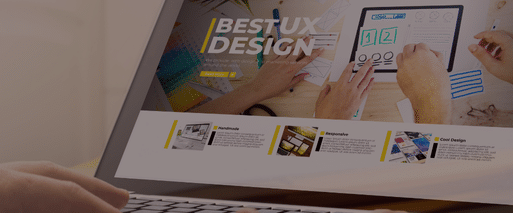With thousands of WordPress themes available, choosing the “best” one can be daunting. From flashy demos to endless feature comparisons, it’s easy to get caught up in design and miss what matters most.
Your theme is more than just a visual skin. It affects your website’s speed, SEO, mobile experience, security, and long-term scalability.
In this article, we’ll explain why your WordPress theme choice matters, what features to prioritise, and which themes are best for different types of websites in 2025.
Why Choosing the Right WordPress Theme Matters
Choosing the right WordPress theme is essential for the success of your website. It affects everything from site speed and SEO performance to user experience and security. A well-selected theme can enhance your site’s functionality, improve engagement, and support future growth. Let’s explore why selecting the right theme matters and how it influences your website’s overall success:
Site Speed and Performance: A bloated theme can significantly slow down your site, negatively affecting both user experience and SEO. Fast load times are essential for keeping visitors engaged and improving search engine rankings.
Mobile Responsiveness: With mobile traffic now dominating, having a responsive design is non-negotiable. A theme that adapts seamlessly to different screen sizes ensures a better experience for mobile users.
Security: Poorly coded or outdated themes can leave your site vulnerable to security threats. Regular updates and good coding practices are essential to protect your website from potential risks.
SEO Friendliness: Clean code, schema support, and fast load times are all critical for SEO. Themes that prioritise these elements can help improve your search engine visibility and performance.
User Experience (UX): The overall layout, navigation, and readability of your theme affect how users interact with your site. A well-designed theme encourages engagement and enhances the user experience.
Plugin Compatibility and Scalability: Your theme should work well with essential plugins and be flexible enough to scale as your business grows. A theme that supports plugins and adapts to new features will save time and resources in the long run.
Key Features of a Great WordPress Theme
When evaluating a theme, look for a lightweight, fast-loading design that ensures quick page speeds. A responsive layout is crucial, allowing your site to adjust seamlessly across all devices, ensuring an optimal experience for every visitor.
The theme should also include SEO-friendly code, such as structured data and clean markup, to improve visibility in search engines. Regular updates and active support are essential for maintaining security and performance.
Ensure the theme is compatible with key plugins, such as WooCommerce, Elementor, and WPML, to extend functionality. Flexibility in design and accessibility features are also important, allowing you to create a user-friendly, visually appealing site.
Finally, secure coding standards are essential to protect your site from vulnerabilities.
Here are some questions to ask before choosing a theme:
- Is the theme actively maintained?
- Does it work with your preferred page builder?
- How often is it updated?
- Are reviews and support forums positive?
- Does it support your business type?
- Is it optimised for speed and SEO?
- Will it scale with your content and traffic?
By evaluating these features and considering these questions, you can confidently choose a WordPress theme that best fits your website’s needs and ensures long-term success.
Best WordPress Themes in 2025 (With Pros & Cons)
1. Astra
Ideal for: Agencies, bloggers, e-commerce, and lead-gen sites
Key Features: Lightweight, SEO-optimised, and integrates well with page builders
Pros: Fast performance, easy customisation, huge starter site library
Cons: Some features locked behind paid version
2. GeneratePress
Ideal for: Developers and performance-focused sites
Key Features: Modular design, built for speed, hooks and filters for advanced customisation
Pros: Excellent performance, stable, developer-friendly
Cons: Steeper learning curve for beginners
3. Hello Theme (by Elementor)
Ideal for: Sites built entirely with Elementor
Key Features: Minimalist base theme optimised for Elementor
Pros: Super lightweight, full control with Elementor
Cons: Requires Elementor Pro for most styling options
4. Kadence
Ideal for: E-commerce and course creators
Key Features: Great WooCommerce support, user-friendly starter templates
Pros: Modern design, flexible, lightweight
Cons: Some features only in Pro version
5. OceanWP
Ideal for: Multi-purpose, high-content sites
Key Features: Built-in mega menus, e-commerce and blog layouts
Pros: Versatile, feature-rich
Cons: Can become bloated with too many extensions
Free vs Premium Themes: What’s the Difference?
Free Themes are ideal for small or personal websites, offering a no-cost option for simple projects. However, they often come with limited support, fewer updates, and may lack advanced features, making them less suitable for sites that require ongoing maintenance or scalability.
Premium Themes, on the other hand, provide full support, regular updates, and greater design flexibility, making them a better choice for businesses or more complex websites. The trade-off is the upfront cost or subscription fee, but the investment often pays off with added security, advanced features, and reliable support.
While free themes can be a good fit for basic sites, they tend to lack the necessary updates and support for more demanding projects. Premium themes, with their enhanced features and security, offer peace of mind, particularly for businesses.
It’s important to avoid bulky “do-it-all” themes with an overload of built-in features like sliders and page builders. Instead, opt for modular, performance-friendly themes that prioritise speed and flexibility without unnecessary extras.
Common Mistakes When Choosing a Theme
Avoid these pitfalls to select a theme that delivers both form and function:
- Choosing based on visuals alone: A great design is important, but functionality and performance matter just as much.
- Ignoring mobile responsiveness: With mobile traffic on the rise, a theme that’s not responsive will harm user experience and SEO.
- Opting for outdated or unsupported themes: Lack of updates can lead to security risks and compatibility issues.
- Not checking plugin compatibility: Ensure the theme works well with the essential plugins you need.
- Locking into a builder/theme combo: Make sure you understand its limitations before committing, as it can restrict flexibility.
How to Test a Theme Before Committing
To avoid damaging your live site, always use a staging environment when making changes. Check load speed with tools like PageSpeed Insights or GTmetrix to ensure optimal performance.
Use BrowserStack or similar tools to preview how your site looks on mobile devices. Test your theme with core plugins such as WooCommerce, Yoast, and Elementor to ensure compatibility.
Finally, scan your code for vulnerabilities using tools like WP Check or WPScan to keep your site secure.
Theme Choice & Your Website Goals (SEO, UX, CRO)
Your business goals should guide your theme choice. Lead generation sites benefit from themes that prioritise speed, user experience, and conversion-focused layouts like Astra. Content-heavy blogs should focus on themes that enhance readability and feature clean typography. E-commerce stores require themes with WooCommerce support, product filtering, and fast performance.
To conclude, the “best” WordPress theme is the one that aligns with your goals, audience, and long-term growth strategy. Your theme affects far more than design. It shapes your SEO performance, site speed, conversion rate, and user experience.






